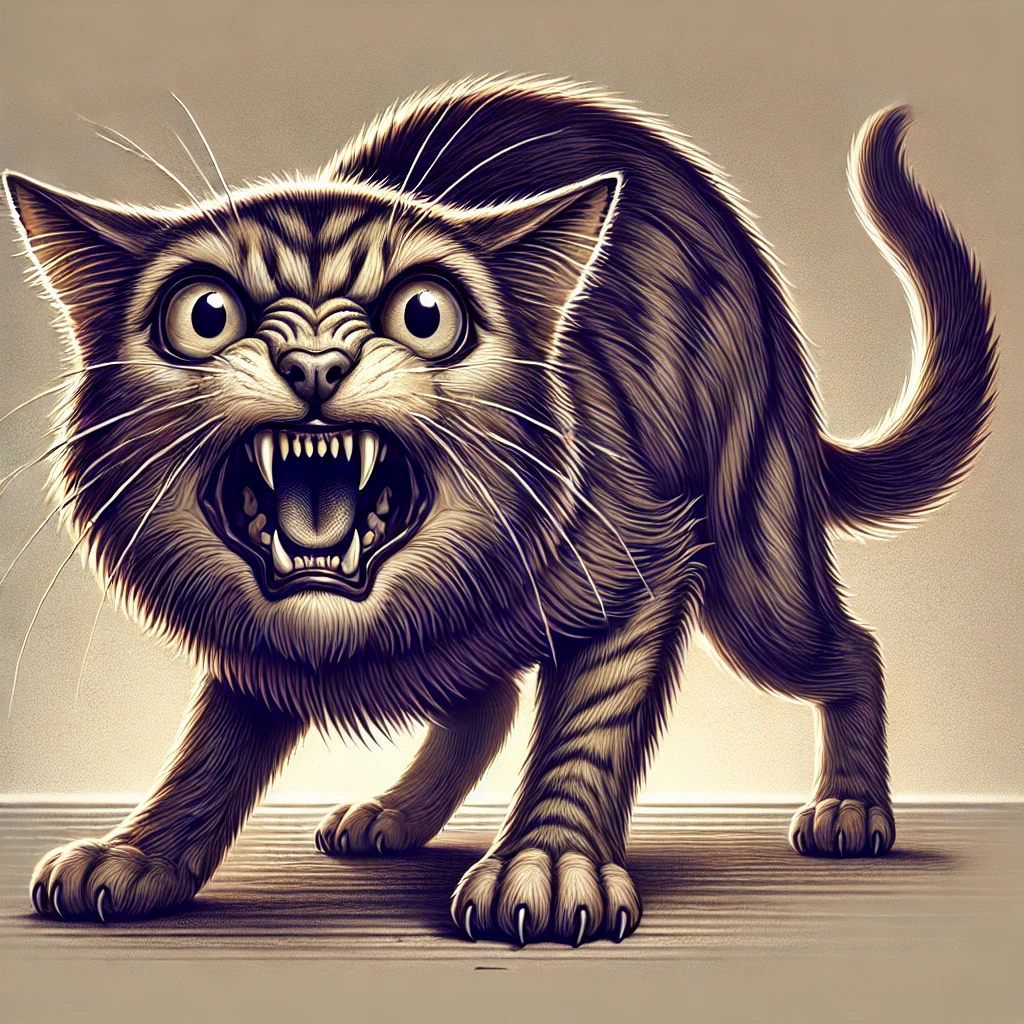Learn what aggressive vocalizations mean and how to ensure safety during such interactions.
Introduction
Have you ever been startled by your cat hissing or growling unexpectedly? These aggressive sounds can be unsettling, but they are important communication tools in the feline world. Recognizing signs of fear or aggression, such as cat hisses and growls, helps you understand your cat’s emotions and respond appropriately. In this article, we’ll explore why cats hiss and growl, the differences between defensive and offensive sounds, triggers for aggressive vocalizations, and safe ways to de-escalate tension.
Reasons Behind Hissing and Growling
Communication of Discomfort or Threat
Hissing and growling are natural responses that cats use to communicate discomfort, fear, or aggression. They’re not being spiteful; rather, they’re expressing their feelings in the only way they know how.
Fear or Anxiety
- Fear Response: When a cat feels threatened, they may hiss or growl to warn the perceived threat to stay away.
- Anxiety Triggers: Loud noises, unfamiliar environments, or sudden movements can cause fear-induced vocalizations.
Pain or Illness
- Medical Issues: A cat in pain may hiss or growl when touched in a sensitive area.
- Behavioral Changes: Sudden aggression may be a sign that your cat needs a veterinary check-up.
Territorial Behavior
- Defending Territory: Cats are territorial animals. They may hiss or growl at other animals or people invading their space.
- Introducing New Pets: Bringing a new pet into the home can trigger territorial aggression.
The Role of Instincts
Cats have inherited these behaviors from their wild ancestors. Hissing mimics the sound of a snake, which many animals instinctively avoid. This serves as an effective deterrent against potential threats.
Defensive vs. Offensive Sounds
Understanding whether your cat is being defensive or offensive can help you decide how to react.
Defensive Aggression
- Body Language: Ears flattened, body crouched, tail tucked or puffed up.
- Vocalizations: Hissing, spitting, low growling.
- Meaning: The cat feels threatened and wants to protect itself.
Offensive Aggression
- Body Language: Ears upright or slightly forward, body erect, tail stiff or flicking.
- Vocalizations: Loud growling, yowling, or snarling.
- Meaning: The cat is confident and may be preparing to attack.
Context Matters
- Environmental Cues: Look at what’s happening around your cat to determine the cause.
- Past Experiences: Previous negative experiences can influence their current behavior.
Understanding these differences can prevent misinterpretation and help you manage the situation effectively.
Identifying Triggers for Aggressive Vocalizations
Common Triggers
- Strangers: Unfamiliar people or animals can cause stress.
- Overstimulation: Excessive petting or rough play may lead to hissing or growling.
- Resource Guarding: Protecting food, toys, or favorite resting spots.
- Loud Noises: Thunderstorms, fireworks, or household appliances.
Behavioral Signs
- Dilated Pupils: Indicates arousal or fear.
- Puffed Fur: A sign of fear or aggression.
- Tail Movements: Rapid flicking can signal irritation.
Health-Related Causes
- Dental Pain: Oral discomfort can make a cat irritable.
- Arthritis: Painful joints may cause aggression when touched.
- Hyperthyroidism: This condition can increase irritability.
If you suspect health issues, consult your veterinarian for a thorough examination.
Safe Ways to Respond and De-escalate Tension
Do Not Punish
- Avoid Negative Reinforcement: Punishing your cat can increase fear and aggression.
- Stay Calm: Your reaction can influence your cat’s behavior.
Give Them Space
- Allow Retreat: Let your cat move away to a safe space.
- Avoid Direct Eye Contact: Staring can be perceived as a threat.
Use Distractions
- Redirect Attention: Use toys or treats to shift their focus.
- Environmental Enrichment: Provide scratching posts, hiding spots, and perches.
Positive Reinforcement
- Reward Calm Behavior: Praise and treats when your cat is relaxed.
- Gentle Interaction: Pet your cat in areas they enjoy, like under the chin.
Consult a Professional
- Veterinary Check-Up: Rule out medical causes.
- Animal Behaviorist: For persistent aggression, seek expert advice.
Introduce Changes Gradually
- New Pets or People: Introduce them slowly to minimize stress.
- Routine: Maintain a consistent schedule for feeding and playtime.
By responding appropriately, you can help your cat feel secure and reduce aggressive behaviors.
Conclusion
Understanding cat hisses and growls is essential for a harmonious relationship with your feline companion. Recognizing the reasons behind these aggressive vocalizations allows you to respond in a way that ensures safety and reduces stress for both you and your cat. Remember, proper interpretation and gentle handling can prevent conflicts and strengthen the bond with your pet. By being attentive to their needs and signals, you create a supportive environment where your cat feels safe and loved.






